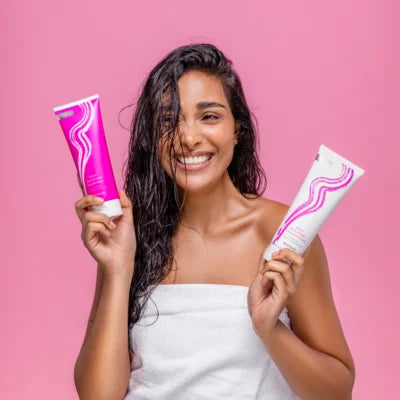Did you know that dirty or unkept hair tools can actually affect the quality of your hair extensions and styling capabilities? Residue build-up, dryness and poor functionality are just a few of the problems you might face if you fail to take care of your styling equipment. For professionals it's even more important to keep your kit in tip top shape not only for your customers health, but to protect your assets too. In today's blog, we explain how to take care and correctly disinfect of all your hair tools from electrical stylers to the basics like combs and brushes.
1. How To Clean Straighteners And Curling Tongs?
Residue and oils can build up on your heated hair tools, especially if you use them on a daily basis: this can cause greasiness in your hair or extensions and also make the straighteners or tongs less effective. Once a month or when you notice steam or build-up, you should clean your straighteners with a cotton wool pad dabbed in a small amount of rubbing alcohol. Always make sure the appliance is unplugged and completely cool before cleaning and leave to dry for 1-2 hours before using again.
2. How To Clean Hair Brush?
Each day we all lose a certain amount of hairs from our head: this is completely normal and known as natural hair fall. Brushing the hair, especially in the morning, helps to remove this natural shedding and detangles any knots in the hair. A clogged up hair brush wont detangle your hair or hair extensions properly as the teeth or bristles are covered and not able to glide through the knots evenly. To remove the excess hair use the end of a pin tail comb to loosen it away from the brush cushion and gently pull out. For our top recommended hair brushes check out our blog “Brush Hour: The Ultimate Guide To Hairbrush Types”.
3. What Is The Best Way To Clean Hair Brushes?
If your brush is dirty as well as clogged with hair, removing the hair is just the first step to cleaning it. Rinse the brush with warm water and add a small squeeze of shampoo, cleansing shampoo is the best type to use in this scenario as its designed to remove residue and impurities. If your all out of cleansing shampoo, other kinds will also work just not as effectively. Give your brush a gentle scrub and rinse thoroughly until the water runs completely clear. Check out our favourite cleansing and clarifying shampoos here in our blog “Best Shampoos To Remove Hair Dye At Home".
4. How Do You Clean And Disinfect Hair Tools?
Smaller tools like combs and clips collect more dirt and residue as the teeth are closer together and they are used closer to the scalp. They are often also used alongside products like oils, serums and hairspray to smooth the hair which can all lead to greasiness if applied to the wrong areas of the head. For standard combs like wavers or wide toothed combs warm water and a cleansing shampoo rinse will do the trick to remove scurf and any leftover oils.
For professional tools such as cutting combs and pin tails salons use a special solution called ‘Barbicide’ which is diluted with water and left in specialised jar. It kills bacteria and disinfects your tools between clients to avoid any cross contamination or the spreading of headlice. For hairdressers on the go a good alternative is rubbing alcohol for sterilizing your tools, I advise wearing gloves whilst using as it can be drying on the skin.
5. How Do You Clean Hairdressing Scissors?
If you’ve ever tried to use dirty or sticky scissors to cut hair or hair extensions you will know that it's not easy and can completely ruin your work! Usually, a wet cloth will work to remove most residue build-up however for tough stains you may want to use a cloth dabbed with acetone or alcohol which will clean the surface and kill any bacteria.
A lot of salons like to store their scissors and cutting combs inside a Ultraviolet Sterilisation Box in between uses as this is another way to disinfect your tools.
6. How Often Should You Clean Your Hair Tools?
Professional tools used on multiple clients should be cleaned thoroughly after each use: this includes scissors, combs, brushes and clips. This is to prevent any cross contamination or residue passing between customers which could lead to oiliness and spoiled styling.
For electrical tools like tongs, straighteners and hair dryers you should wipe down once a month and whenever you notice heavy steam or residue on the appliance.
7. Conclusion
Now you know how to look after your tools correctly why not go through our top 10 guide for tools and accessories to use with hair extensions? Click here to find out more!












